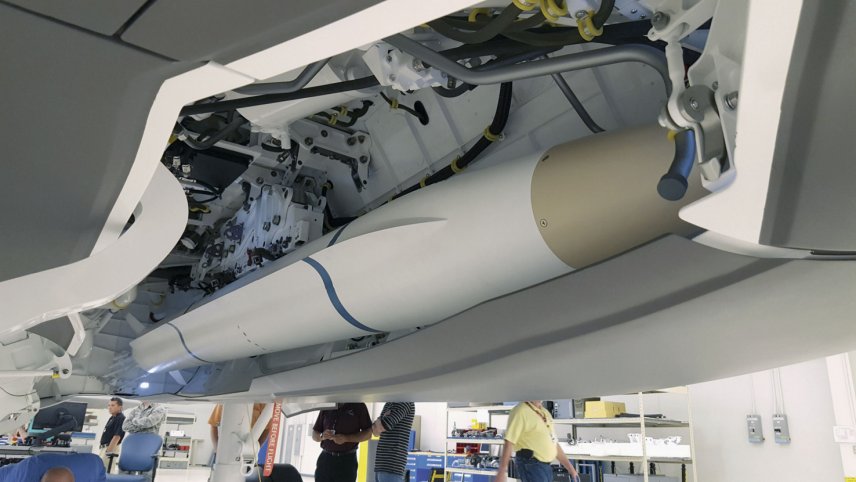The US Air Force has awarded contracts to three companies for the first phase of a new project to develop an air-to-ground stand-in attack weapon (SiAW).
The weapon would allow the F-35 stealth fighter jets to strike adversary targets in an anti-access, area-denial environment, a zone China is trying to create around Taiwan.
US ‘Decoding’ Russian Hypersonic Missile To Gain Critical Intelligence On Mach 5+ Weapons – Media
The service chose Lockheed Martin, Northrop Grumman, and L3Harris Technologies out of five companies for phase one of the SIAW program, Air Force Magazine reported.
According to Lena Lopez, a spokeswoman for the Air Force Life Cycle Management Center’s Armament Directorate, the three-month contracts, each for $2 million, were given on May 25.
In supporting documents for its proposed fiscal 2023 budget, the Air Force first indicated that it was poised to go forward with the SiAW. The service has committed around $1.9 billion for SiAW development over the next five years, beginning in the fiscal year 2023 and extending through 2027.

“We’ve been asked to present an open, agile, and digital weapon that can be rapidly upgraded through digital engineering,” said Bryan Gates, senior manager of Northwest Florida Operations for MFC’s air dominance and strike weapons unit.
“This is an open system architecture with a digital design that allows us to bring in other pieces and parts from subcontractors [and] other companies to develop this weapon,” Gates stated, adding that the mix will be determined by the Air Force.
To increase the flexibility and adaptability of its future force, the Air Force is also studying modular approaches, including air-to-air missiles and unmanned aircraft.
SiAW Missile
The SiAW air-to-ground weapon system is designed to strike surface elements such as “theater ballistic missile launchers, land-attack and anti-ship cruise missile launchers, GPS jammers, anti-satellite systems, and integrated air defense systems” in anti-access/area-denial scenarios.
The weapon range would be shorter than standoff weapons, which are intended to be launched from a distance beyond the enemy’s defensive range, usually by a B-52 bomber.
In an interview, Michael Stuart, Northrop’s director of business development, said an aircraft would unleash this stand-in weapon after infiltrating hostile airspace and inching closer to the objective.
To avoid undermining the F-35’s stealth characteristics, Stuart said the stand-in weapon must be carried within the plane’s bay rather than on an external mount. However, he noted that the F-22’s internal bay isn’t big enough to carry this armament.

Stuart further explained that the stand-in missile would be faster than other weapons the F-35 could deploy. It will provide it a better chance of reaching its target before enemy defenses could intercept it.
Meanwhile, Lockheed Martin shared a YouTube video of an F-35 releasing six SiAWs—four from underwing stations and two from internal weapons bays. The missiles can be seen flying straight ahead and then straight up before the footage concludes.
This flight profile, according to Gates, is characteristic of weapons that travel some distance before destroying their targets. “If you’re launching from any type of distance, you’re gonna get some altitude to derive your target solution,” Gates said.
The SiAW is being designed by Lockheed’s Missiles and Fire Control division, adopting advanced digital engineering processes pioneered by its Skunk Works unit.
“Applying new and emerging technologies to the way we design, build and sustain our products across the enterprise will better equip the warfighter for success today and into the future,” the company said.
The video shows that the SiAWs can be volley-launched and guided to their targets simultaneously. Gates refused to specify what kind of guidance the weapon employs.
:quality(70)/cloudfront-us-east-1.images.arcpublishing.com/mco/JRBMFD2MOZCIRIHZ2LNK7CX3R4.jpeg)
The SiAW appears to be based on the Navy’s Advanced Anti-Radiation Guided Missile (AARGM), which is a derivative and expansion of Northrop’s AGM-88 HARM air-to-surface anti-radiation missile.
With a warhead and fuse capable of “expanded target sets,” the SiAW will be more significant for fifth-generation aircraft like the F-35, according to Janes.
The initial acquisition strategy for the United States Air Force was to acquire the weapon solely from Northrop Grumman, but in April 2021, the service opted to open the program to other bidders.
The Air Force wants to employ an open-system architectural concept for this project, which would enable it to “plug and play” different modular systems, according to Stuart. Different components may be integrated more simply without requiring a rigorous test and assessment process, and the weapon could be enhanced more easily.
- Contact the author at ashishmichel@gmail.com
- Follow EurAsian Times on Google News




